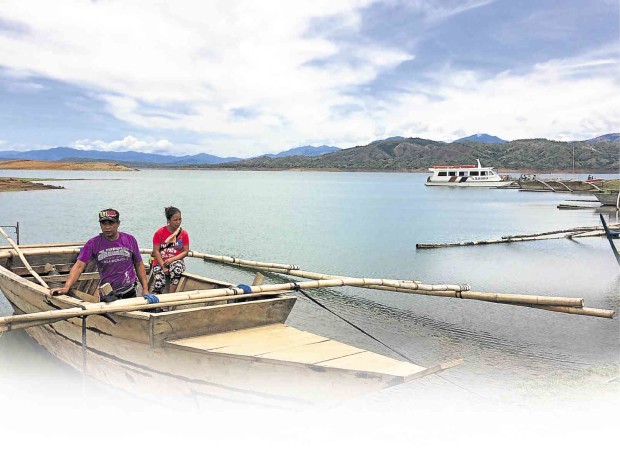
WATER level at Pantabangan Dam declines amid the dry season, too low to feed a tributary that brings water to households in Pantabangan town. TONETTE T. OREJAS/INQUIRER CENTRAL LUZON
PANTABANGAN, Nueva Ecija—The signs of a problem that should not exist linger in this mountain town.
Every household has water drums in their backyards. “Indiana Jones,” the name of a water distribution truck, is parked to refill the next customer’s containers, its task never ending because every home needs domestic water 24 hours a day.
This water shortage is unusual for a town that hosts Asia’s second biggest dam that provides hydroelectric power to Luzon.
Mayor-elect Roberto Agdipa himself ordered six 1-gallon containers of water for a beeline of guests. A gallon costs P5 while a drum full of water is worth P60.
“The ‘balong’ (water tributary) has been dry for months,” said Agdipa, referring to the entry of water from Pantabangan Dam in Sitio Aya in East Poblacion.
This crude water system is run by the local government, which also operates the Pantabangan Municipal Electric System (Pames) for the town’s 30,000 residents.
Government agencies turned over these utilities to the local government after seven of 14 villages of the town were submerged by the Pantabangan Dam in 1974.
“The [water distribution] lines are as old as me. These are made of asbestos. The water system here needs to be totally rehabilitated and installed with a treatment plant,” Agdipa said.
The depletion of the water supply had taken place 20 years after the original location of the town was inundated.
In 2006, a team from the University of the Philippines Los Baños, in a report based on simulations of the likely effects of climate change on the Pantabangan-Carranglan watershed, said chances of rain would decline by up to 80 percent and average temperature would rise by as much as 8.4 percent at the end of the century.
Agdipa, a former nurse, said the water problem should be solved to prevent diseases.
He said officials also need to address Pames’ debts and recover taxes from hydropower firms. “But water first,” he said.